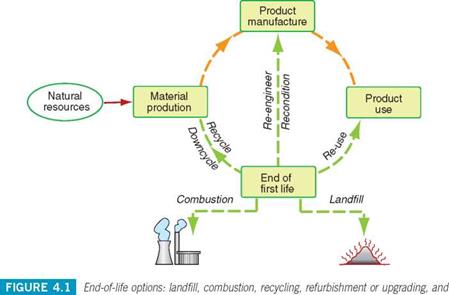The rapid turnover of products we see today is a comparatively recent phenomenon. In earlier times, furniture was bought with the idea that it would fill the needs not just of one generation but of several—treatment that, today, is reserved for works of art. A wristwatch, a gold pen—once these were things you used for a lifetime and then passed on to your children. No more. Behind all this is the question of whether the value of a product increases or decreases with age.
A product reaches the end of its life when it’s no longer valued. The cause of death is, frequently, not the obvious one—that the product just stopped working. The life expectancy is the least of the following:1
■ The physical life, meaning the time in which the product breaks down beyond economic repair
■ The functional life, meaning the time when the need for the product ceases to exist
■ The technical life, meaning the time at which advances in technology have made the product unacceptably obsolete
■ The economical life, meaning the time at which advances in design and technology offer the same functionality at significantly lower operating cost
■ The legal life—the time at which new standards, directives, legislation, or restrictions make the use of the product illegal
■ Finally, the loss of desirability—the time at which changes in taste, fashion, or aesthetic preference render the product unattractive.
One obvious way to reduce resource consumption is to extend product life, making it more durable. But durability has more than one meaning; we’ve just listed six. Materials play a role in them all—something that we return to later. Accept, for the moment, that a product has reached the end of its life. What are the options? [11]
|
reuse. |




